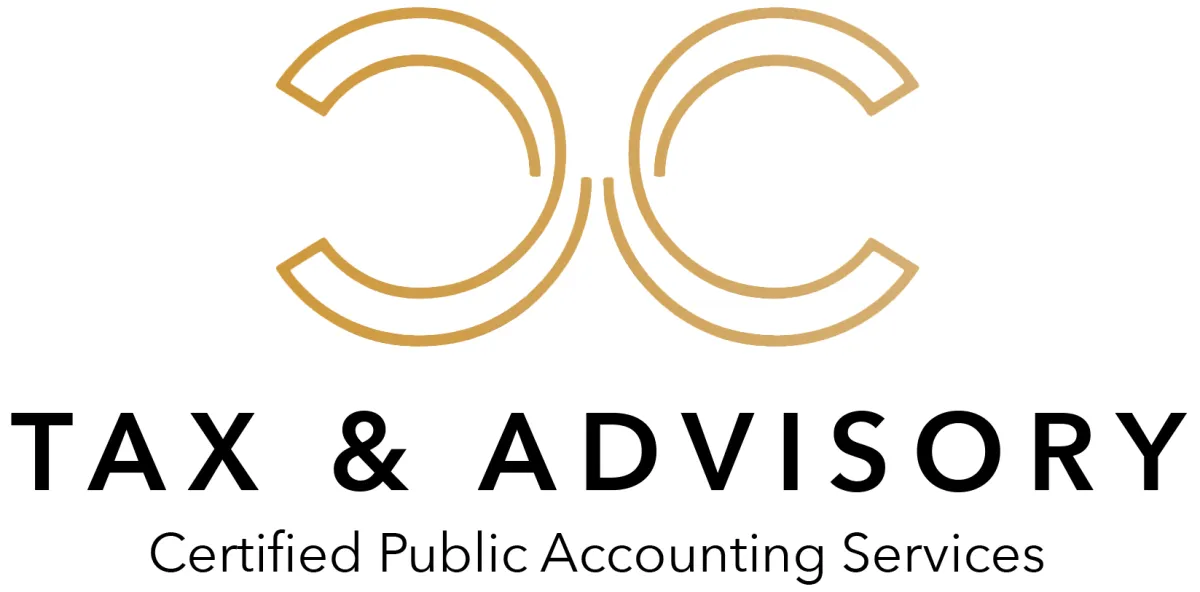

Blog
We strive to get to know you and your business. To understand your future goals and to provide a proactive approach to help you achieve those goals.
We strive to get to know you and your business. To understand your future goals and to provide a proactive approach to help you achieve those goals.

Tax Planning - Part Two
In part one of this series, we looked at strategies to reduce adjusted gross income (AGI) but the planning doesn't stop there. We call deductions that reduce AGI "above the line" deductions. However, tax savings opportunities don't stop with AGI.
Even with the higher standard deductions introduced by the Tax Cuts and Jobs Act (TCJA), many taxpayers can find additional deductions to reduce their taxable income. Beyond that, taxpayers may also be eligible for tax credits, which reduce your tax bill dollar-for-dollar and can even be refundable—meaning you could receive a tax refund if and when the credit reduces your tax bill to less than zero.
Read on for some tax planning tips reducing taxable income and maximizing credits that may work for you.
STRATEGIES TO REDUCE TAXABLE INCOME (AGI)
Mortgage Interest Deduction. The IRS allows a deduction for qualified residence interest (QRI), which is generally interest paid on debt secured by your principal residence and one additional residence. Home equity loan interest is also deductible if it meets the definition of acquisition debt—if it is used to purchase, construct, or improve your home. TCJA (in effect for tax years 2018-2025) limited the amount of debt covered to $750,000 (or $375,000 for married couples filing separately). If the TCJA tax laws are not extended, in 2026 the limitation will go back up to $1 million. See Internal Revenue Code §163 for more details.
Real Estate or Real Property Tax Deduction - Real property tax deductions are also available under IRC §164. While there are no limitations based on dollar amount or the number of properties (as there is with mortgage interest), real estate taxes are impacted by state and local tax (SALT) limitations. Per the TCJA cap, SALT deductions cannot exceed $10,000 (or $5,000 for married couples filing separately) on your federal tax return. However, many states have instituted workarounds to provide additional tax benefits for residents, such as provisions for pass-through entities.
Capital Gains - The Jobs Growth and Tax Relief Reconciliation Act (enacted in 2008) introduced a 0% tax rate on capital gains for those in lower income brackets. In 2023, you qualify if your taxable income is no higher than $44,626 for single taxpayers or married couples filing separately (or $59,750 for heads of household and $89,250 for married couples filing jointly).
Itemized Deductions - Since TCJA raised the standard deduction amount, fewer taxpayers have been opting to itemize their deductions. While you may not have enough deductions to use Schedule A every year, you might benefit from “bunching” your deductions so that you use the standard deduction one year and itemize the next year. One way to do this is to time your medical expenses or charitable donations so that they fall within the tax year when you are planning to use Schedule A.
STRATEGIES TO MAXIMIZE TAX CREDITS
The following list of tax credits and other benefits can reduce your tax liability and possibly even provide you with a larger tax refund. These benefits are specific to taxpayers without employer-provided health insurance:
Premium Tax Credit (PTC) - The Affordable Care Act created a refundable credit for coverage under a qualified health plan, such as plans purchased from a state or federal health insurance marketplace. Typically, the refundable PTC is available for taxpayers whose income does not exceed 400% of the federal poverty line.
Additionally, taxpayers can receive PTC funds in advance, and the amount will later be reconciled when you file your tax return. If you received too much money, you will repay it as part of your tax liability, and if you received too little, you can claim it to reduce your liability or increase your refund (whichever applies).
Health Insurance Subsidies - Some taxpayers may be able to reduce their modified AGI (or MAGI) to the point where they qualify for free or low-cost health insurance. For example, New York has an essential plan for lower-income taxpayers who do not qualify for Medicaid.
Another set of tax benefits are available for those who are pursuing higher education:
American Opportunity Tax Credit (AOTC) - This credit is available for full-time to halftime students in the first four years of their postsecondary education. The maximum allowable credit is $2,500 per eligible student—100 percent of the first $2,000 in qualifying education expenses and 25 percent of the next $2,000 in qualifying expenses. If the credit eliminates your tax liability, up to $1,000 of the credit can be received as a tax refund. To be eligible, taxpayers cannot have above $90,000 in MAGI (or $180,000 for married couples filing jointly). The credit begins to phase out starting at $80,000 in MAGI (or $160,000 for married couples filing jointly).
Lifetime Learning Credit (LLC) - If you are not eligible for the AOTC, the LLC is available for all years of postsecondary education, as well as courses to acquire or improve job skills. There is no limit on the number of years you can claim the LLC. This credit is non-refundable and covers 20% of eligible educational expenses, with a maximum credit amount of $2,000. The income limit is lower for the LLC with the phaseout starting at $69,000 for single taxpayers (or $138,000 for married couples filing jointly).
Series EE Bonds - Interest on these bonds (if issued after 1989) can become tax-free if they are used to pay for qualified education expenses. Only bonds in the parents’ names qualify, and the income range where the credit phases out is between $83,200 to $98,000 for single taxpayers (or $124,800 to $154,800 for married filing jointly).
Next, we have tax benefits available to taxpayers with children or other dependents:
Child Tax Credit (CTC) - Although TCJA eliminated personal exemptions for taxpayers and their dependents, the legislation also increased the amount and eligibility for the Child Tax Credit (CTC). In 2023, the credit offers up to $2,000 per child aged 16 or younger. The credit begins to phase out at $200,000 in MAGI (or $400,000 phase-out limits).
Child and Dependent Care Tax Benefits - Parents and guardians who work (with limited exceptions) may be able to claim this credit. The standard limit for qualified expenses is $3,000 for one dependent and $6,000 for two or more dependents under age 13.
Credit for Other Dependents (ODC) - This credit is available for taxpayers who do not qualify for the CTC. “Other dependents” may include children 18 or older, parents or other qualifying relatives supported by the taxpayer claiming the credit, or dependents living with the taxpayer who are not relatives. Dependents must be US citizens, nationals, or resident aliens and have a Social Security number or ITIN. The benefit provides $500 per dependent and is non-refundable. The credit begins to phase out for taxpay.
Other tax credits you may be eligible for include:
Retirement Savings Contribution Credit - Also known as the “Saver's Credit,” this can equal up to 50% of your contributions to a retirement plan—a traditional or Roth IRA, elective employer plan (401(k), 403(b), 457(b), SARSEP, or SIMPLE), Achieving a Better Life Experience (ABLE) account, or voluntary after-tax contributions to qualified plans. The income thresholds to receive the maximum 50% credit are $20,500 in AGI for single taxpayers, $30,750 for heads of household, and $41,000 for married couples filing jointly. The Saver’s Credit phases out completely once your AGI exceeds $34,000 (or $51,000 for heads of household and $68,000 for married filing jointly).
Exclusion of Gain From the Sale of a Principal Residence - This exclusion is available for homeowners who have owned and used a home as their main residence for two out of the last five years before the property is sold. The maximum exclusion is $250,000 for single taxpayers (or $500,000 for married filing jointly). This exclusion does not currently index for inflation.
EXAMPLES: APPLYING THE TAX STRATEGIES
Example #1: Mike and Emma saw their combined AGI increase because of estate-related distributions and a Roth IRA conversion. After receiving a significant inheritance, they were interested in increasing their charitable giving. By strategically planning a combination of direct gifts and a Donor Advised Fund, they were able to “bunch” their giving as a large itemized deduction and offset much of their additional income.
Example #2: The Premium Tax Credit. Jessica and Miguel typically contribute the maximum allowable amount to their Roth IRAs. With the advent of the PTC, they discovered that they could greatly reduce their tax liability and enhance their eligibility for lower health insurance premiums by recharacterizing their Roth IRA contributions as traditional IRA contributions. For tax year 2023, Jessica and Miguel each contributed $7,000 to their Roth IRAs. By recharacterizing these contributions to a traditional IRA, they reduced their AGI by $14,000 and reduced their overall federal and tax liability including the PTC.
SUMMARY
The tax code offers an array of opportunities to minimize your taxes, regardless of your income level. As we have demonstrated in this series, tax planning is not just for the wealthy—the majority of taxpayers would benefit from learning about common tax deductions and credits and creating a plan to target the biggest benefits before tax season comes around. For further guidance on identifying the best ways to reduce your tax liability, reach out to our office today!
Our Mission
To develop meaningful relationships with our clients. To not only be your CPA, but your trusted adviser and teammate in all your tax, financial and business decisions. As your family and business grow, we aim to provide you with peace of mind knowing that we are with you every step of the way.
Who We Help
Our clients range from individual taxpayers to small and medium-sized companies. We offer them effective solutions to existing or potential tax problems, assist them with the development of strategies for minimizing tax liabilities, and our tax compliance services include the preparation of federal and state tax returns for all types of entities. In addition, we also provide assistance to our clients with audits and representation before different taxing authorities. We work closely with our clients and not just on the preparation of their tax returns, we also strive to formulate and build on strategies to reduce taxes and preserve wealth.
Copyright 2023 - CC Tax & Advisory - All Rights Reserved
Privacy Policy
https://storage.googleapis.com/msgsndr/UfcbtlxakDyrvjIAbxt9/media/62750e05d4f0e5576ed58cfe.gif
https://storage.googleapis.com/msgsndr/UfcbtlxakDyrvjIAbxt9/media/62750e05d4f0e52effd58cfd.jpeg



